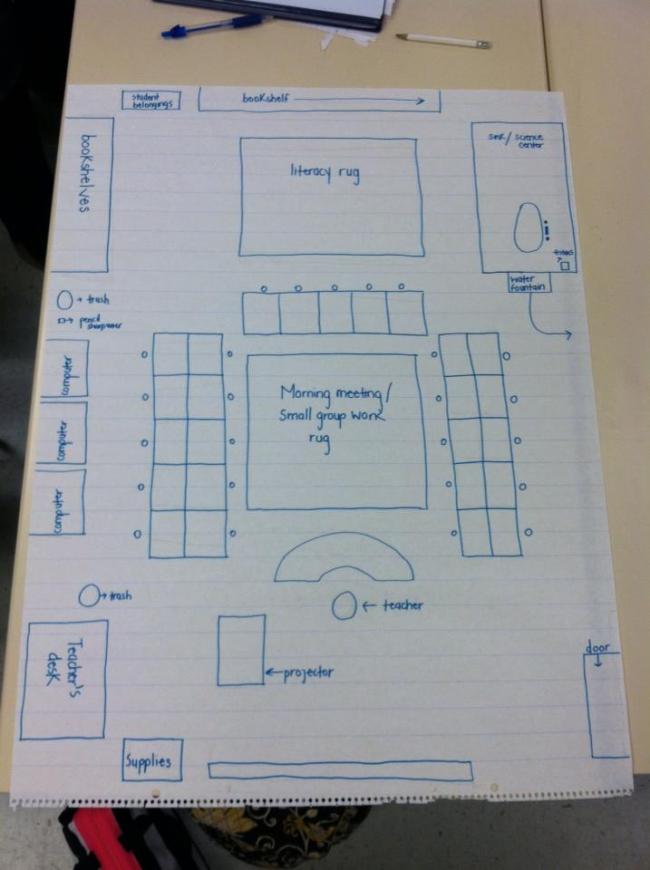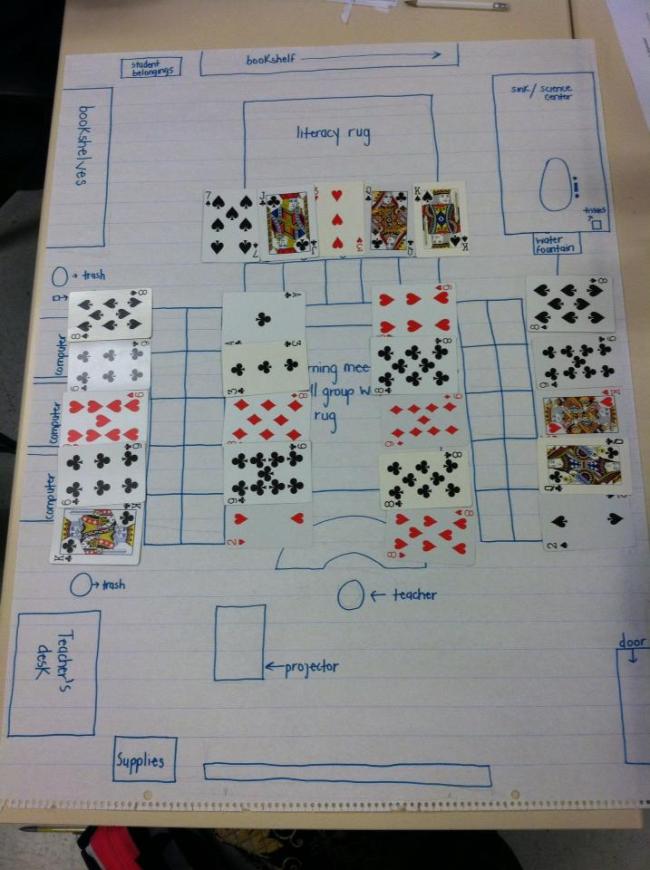This week in classroom management, we worked in groups to form a classroom layout design. While there are many components to a classroom’s layout, the main focus of our group’s attention fell on the arrangement of the students’ desks. In Elementary Classroom Management: Lessons from Research and Practice (Sixth Edition), Carol Simon Weinstein and Molly E. Romano discuss seating in terms of the effect this arrangement has on the interaction among students. This is an important aspect of social contact, which they identify as one of the six basic functions of physical settings. Different types of arrangements facilitate different types of social contact to be taken into consideration when deciding what types of student interactions you as a teacher are hoping to promote in your classroom. Desks in clusters, for example, allow students to work in small groups and can facilitate interactions among students from varying cultural and linguistic backgrounds. Desks in rows, on the other hand, promote student concentration on assignments as an individual and can increase students’ average time-on-task. Ultimately, in creating a classroom layout design for a class of 25 students, our group arrived at the seating arrangement depicted below.
This seating arrangement seemed ideal in its fusion of aspects of rows and also groupings. The U-shape allows students to feel a sense of community in seating while also allowing the teacher ample room to move around the students. Groups are achieved through rows facing each other, to allow for student interaction. The aspects of both rows and clusters in this seating arrangement allow for flexibility in terms of being able to place students where they will be most likely to succeed. A student who needs to be able to focus could be placed in the less distracting single row of seats whereas students who may benefit from interacting more frequently with others could be seated in the rows facing each other.
Following the creation of this design, we did an activity in which playing cards were distributed at random so that each of us had a set of 25 cards representing 25 different students in our hypothetical class. We were given a key explaining what each card meant in terms of describing our hypothetical student. This key is shown below.
Using our classroom layout design, we were then asked to place these “students” as we would seat them in our classroom based on what we know about them from the key, with the caveat that all the diamonds were ELL students. In my initial effort, I placed the students as seen below.
My classroom seating “philosophy” was to mix up the students by reading level and behaviors. I tried to place the social leaders near those with the biggest behavior problems, in the hopes that peer influence would contribute to diminishing negative behaviors. I also attempted to avoid anyone with behavior problems sitting next to anyone else with behavior problems, a task that was easier said than done with a class in which half of the students were identified as nonconformists. I also avoided placing students with ADD/ADHD next to anyone with behavioral issues to avoid any further possible distractions. I additionally placed well-behaving students by possible distractions or areas of high traffic in the classroom such as pencil sharpeners.
I also decided to spread out the ELL students, an approach I became unsure of when discussing this with another classmate whose approach was to group them together. My philosophy was that the ELL students would benefit from interaction with English-speaking students whereas my classmate felt that grouping ELL students of the same primary language together would allow them to work together and help each other in ways their other classmates could not. Ultimately, both of these opportunities are important classroom experiences for ELL students. This dichotomy represents the importance of grouping students in multiple different ways for different activities based on specific student needs and not being hindered by an adherence to your initial seating arrangements.



